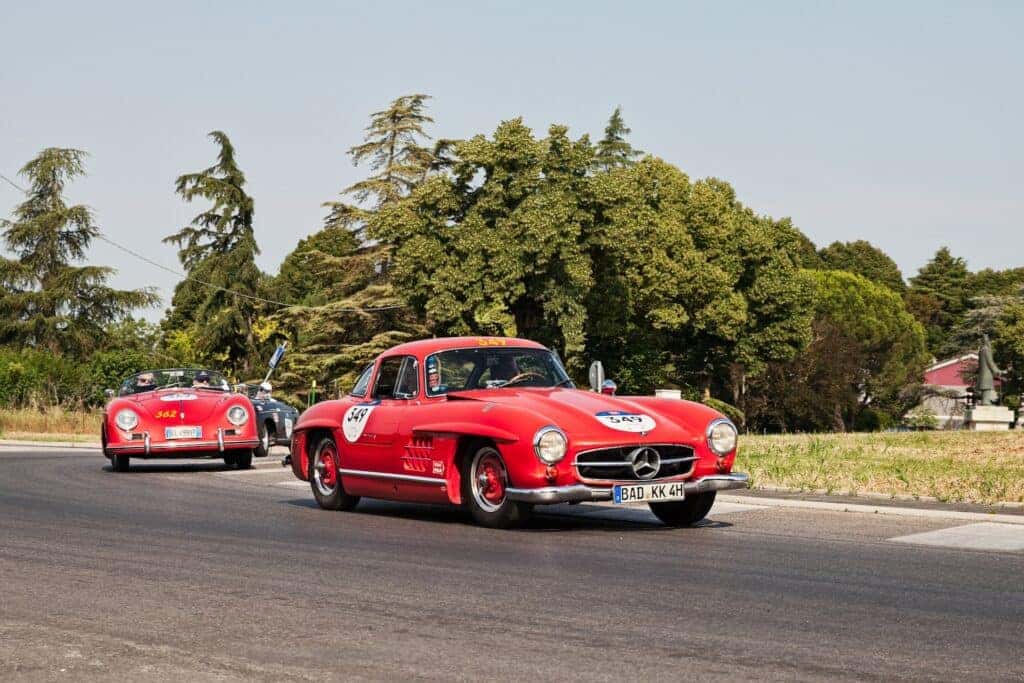
Racing is almost as old as the automobile itself. As the home of the modern automobile, Germany boasts a proud history in racing – bringing some of the world’s most competitive and innovative vehicles to the track and your daily drive.
The Early Years
Inspired by the British automotive industry, Karl Benz and Nikolaus Otto developed a four-stroke internal combustion engine, fitting it to a coach in 1887 and officially creating the modern motor car’s predecessor. The Benz Patent-Motorwagen is widely regarded as the world’s first production vehicle propelled by an internal combustion engine.
A few years later, Pierre Giffard organized the world’s first motoring competition from Paris to Rouen to grow interest in French motor manufacturing and his newspaper. With a prize pot of 10,000 francs, people came from near and far to show off their revolutionary designs. Some notable participants included Peugeot, Panhard, Serpollet, and the up-and-coming Benz. In the end, a Benz vehicle received 5th place out of roughly one hundred competitors, something the Germans were very proud of. The reliability test drive from Paris to Rouen began a centuries-long tradition of Mercedes-Benz motorsport.
After automakers developed and invested in motorsport, racing was comprised of prototypes of the following year’s models – a great way to test out their innovations, as was tradition. After World War I, however, racing vehicles became too specialized to use commercial production cars except for high-performance touring cars, and as racing organizations and tracks became established, regulations kept certain cars off the racetrack.
Golden Age of Motorsport and German Racing
The 1930s began a decades-long streak of development in motorsport. Stock car racing began in Daytona Beach before moving to tracks, NASCAR was founded in 1947, and Grand Prix racing guidelines were standardized worldwide in the 1950s.
Where cars in the early years of racing could put out roughly 25-mile-an-hour speeds, German automakers were intent on beating the competition. In 1955, Mercedes-Benz’s 300SLR was essentially an F1 car in a coupe body. Powered by a straight-eight engine, it could tune upwards of 310 horsepower, impressing spectators at the 1955 World Sportscar Championship.
Enjoy the Best of German Engineering
To this day, Mercedes-Benz continues to push the envelope on speed. Many of the Formula 1 cars currently competing use Mercedes AMD engines, and Mercedes-Benz offers their manufacturing expertise to other vehicles crucial to the safety of racing, like safety cars. Mercedes is also active in racing touring vehicles and other sportscars available to the public.
At Mercedes-Benz of Macon, we want to help you experience true power and speed generations in the making. Visit our dealership today and test drive the fast 2024 Mercedes-Benz EQS or the 2024 Mercedes-Benz S-Class for your chance to be part of German racing history. Whether you need a new car for your daily driving or something to bring to the track, we can find the right vehicle for your needs.
 AdChoices
AdChoices